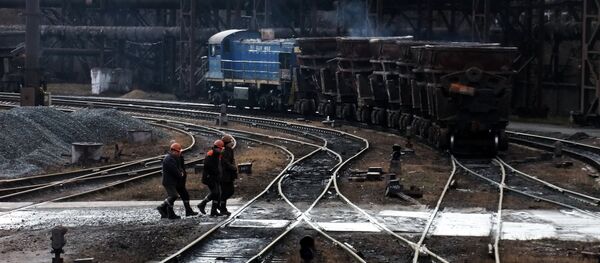KIEV (Sputnik) — In December 2016, a group of former participants of Kiev's military operation in Donbass, including several lawmakers, imposed the blockade of supplies from the republics of Donbass. The blockade resulted in shortage of coal at the Ukrainian power stations. On February 15, Ukrainian government introduced a state of emergency in the energy sector.
"At the moment there are three scenarios [in the energy sector]. The first option is emergency state until June 1. The second scenario implies temporary measures until September 1. And the third scenario means that the temporary measures would last until the end of 2017," Kistion said, as quoted by the Ukrainian News One broadcaster.
He added that the cabinet considered the extension of the emergency state until June 1 as the most favorable variant.
The Donetsk People's Republic (DPR) and the Lugansk People's Republic (LPR) decided to impose receivership regime on Ukrainian enterprises in the area on March 1 in response to the transport blockade.
In February 2015, Kiev forces and Donbass independence supporters signed a peace agreement in the Belarusian capital of Minsk. The deal stipulates a full ceasefire, weapons withdrawal from the line of contact in Donbass, as well as constitutional reforms that would give a special status to the Donetsk and Lugansk People's Republics. Despite the agreement brokered by the Normandy Four states, the ceasefire regime is regularly violated, with both sides accusing each other of multiple breaches, undermining the terms of the accord.



